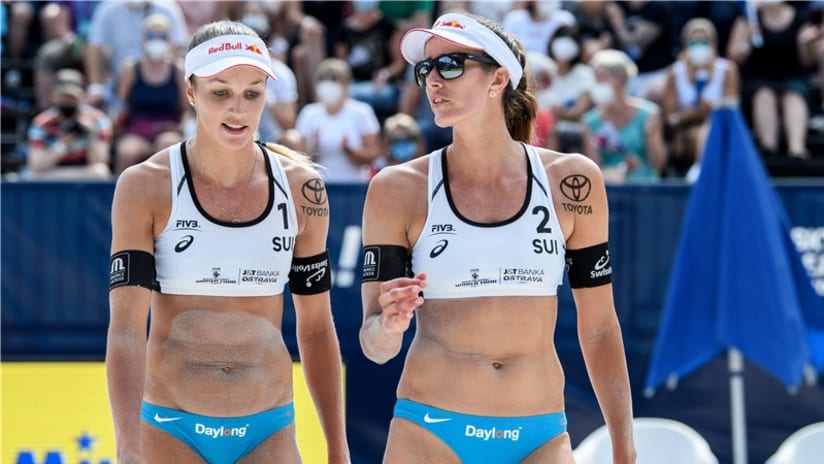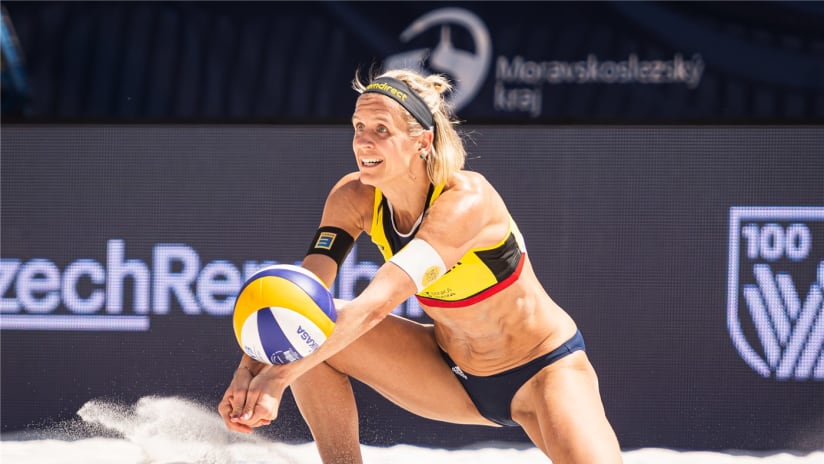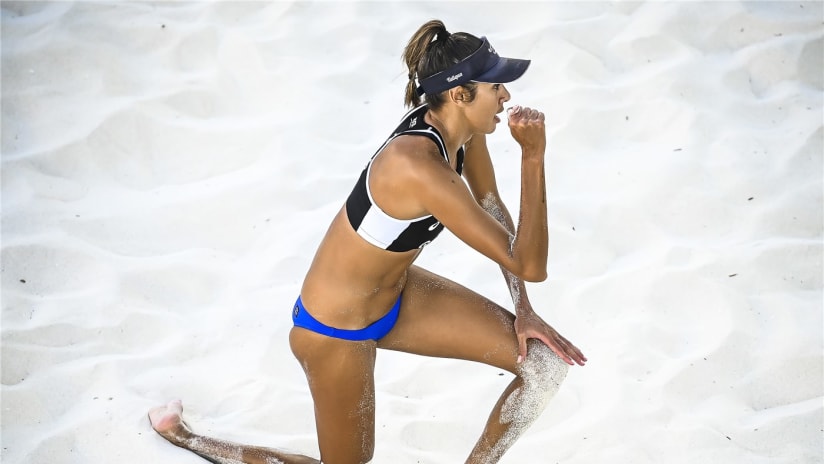They separated themselves quickly, the top. So quickly that it would be wrong to say that April Ross and Alix Klineman flew up the ranks, or that Melissa Humana-Paredes and Sarah Pavan climbed the ladder.
Olympic Games Tokyo 2020 - Beach Volleyball
Tokyo Tracker: Top-15 women's teams established themselves early in the race
While the men's race to Tokyo featured no small deal of change at the end, the top-15 teams on the women's side established themselves early in the race
Published 04:16, 15 Jun 2021

Neither really had to do it.
That’s essentially where they started, and it’s exactly where they ended: the top.
The women’s Olympic race to Tokyo was considerably different than the men’s. While, yes, there were teams on the men’s side that haven’t had much to worry about in quite some time in regards to Olympic qualifying, the teams ranked 13-20 in the Provisional Olympic Rankings were in a constant state of flux. Several teams that hadn’t once been in the coveted top 15 for the first 30 months of the 33-month race wound up qualifying.
The nucleus of the top-15 women’s teams, on the other hand, has been, for virtually this entire race, steady, consistent, solid. The race reached a point, beginning with Doha in March, that the only real question mark remaining was between Americans Sarah Sponcil and Kelly Claes, Kerri Walsh Jennings and Brooke Sweat, and Emily Stockman and Kelley Kolinske, for the second American berth.
Which is actually kind of cool.
It is cool to see such a glut of excellent teams, ranked one through 15, all of whom could reasonably claim a medal in Tokyo. Marta Menegatti and Viktoria Orsi Toth, the final team to win an Olympic berth via the Olympic rankings, medalled in the first event of the qualification process. Three slots above them are Laura Ludwig and Maggie Kozuch. They’ll be far from the highest-seeded team in Tokyo – yet the Germans won one of the biggest tournaments of the entire qualification process, the World Tour Finals, in Rome, Italy. Doubt them to win a medal in Tokyo at your own peril.

Two ranks ahead of Ludwig and Kozuch are the Czech Republic’s Barbora Hermmanova and Marketa Slukova.
How did they begin this Olympic race?
With a pair of medals, silver and gold.
You could go up and down the list of the teams who earned their way into the Olympics, and a commonality is this: medals. Those medals separated the top 15 from the pack, and quite quickly. It may have made the final few months of the Olympic qualifying process not much of a mystery, but it will make every elimination match in Tokyo appointment viewing.
It wasn’t always this way. For several Olympics, many of the matches were, for the most part, foregone conclusions, barring something extraordinary. But the field has deepened, tightened. Strong teams abound, from every corner of the world: Brazil to China, Czech Republic to the United States, Canada to Switzerland.

The most fun aspect of this race to watch, then, became which teams moved up within those top-15 spots. It was fun to watch the establishment of Claes and Sponcil, who won their first gold medal, and then their second gold medal, in back-to-back tournaments in Sochi and Ostrava. It was fun to watch Russia’s Nadezda Makroguzova and Svetlana Kholomina take six straight top-10s in 2021 to firmly establish themselves as medal threats in Tokyo. It was fun to watch Agatha and Duda claim the No. 1 Brazilian slot, after trailing for almost the entirety of the race. It was fun to see how much better this sport is with Australians Taliqua Clancy and Mariafe Artacho del Solar back on the scene. It was fun to see the Swiss pairs, Anouk Verge-Depre and Joana Heidrich, and Nina Betschart and Tanja Huberli, display just how strong this Swiss Federation is becoming.
It was different viewing from the men’s race, to be sure. But it wasn’t any less intriguing.
It’ll all make Tokyo a fascinating event to behold.







